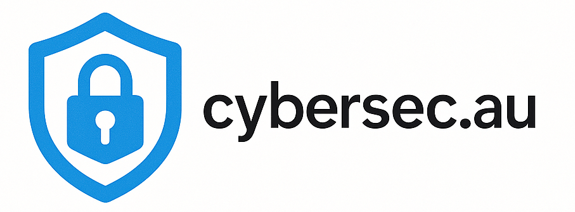Cyber insurance has become essential for Australian businesses as cyber threats escalate and potential losses from data breaches reach millions of dollars. This comprehensive guide covers everything Australian business leaders need to know about cyber insurance, from coverage types to claims processes.
📊 Australian Cyber Insurance Market
What is Cyber Insurance?
Cyber insurance, also known as cyber liability insurance or data breach insurance, is a specialized insurance product designed to help businesses recover from cyber attacks and data breaches. Unlike traditional business insurance, cyber insurance specifically covers the unique costs associated with digital incidents.
Why Cyber Insurance Matters for Australian Businesses
- Financial protection: Coverage for breach response costs and business losses
- Expert support: Access to incident response specialists and legal counsel
- Regulatory compliance: Support for Privacy Act notification requirements
- Business continuity: Funding for recovery and restoration efforts
Types of Cyber Insurance Coverage
First-Party Coverage
Covers direct costs to your business from a cyber incident:
Data Breach Response
- Forensic investigation: Digital forensics and incident analysis
- Legal counsel: Specialized cyber law attorneys
- Notification costs: Customer and regulatory notifications
- Credit monitoring: Identity protection services for affected individuals
- Public relations: Crisis communication and reputation management
Business Interruption
- Lost income: Revenue lost during system downtime
- Extra expenses: Additional costs to maintain operations
- System restoration: Costs to rebuild and restore systems
- Data recovery: Professional data recovery services
Cyber Extortion
- Ransomware payments: Ransom demands and negotiation costs
- Threat response: Professional negotiation services
- Investigation costs: Determining authenticity of threats
Third-Party Coverage
Covers claims made against your business by others:
Privacy Liability
- Regulatory fines: OAIC penalties and regulatory actions
- Class action lawsuits: Customer litigation costs
- Privacy violations: Claims for unauthorized data disclosure
Network Security Liability
- Third-party damage: Costs when your systems affect others
- Virus transmission: Liability for spreading malware
- Network outages: Claims from service disruptions
Cyber Insurance Costs in Australia
Premium Factors
Insurance premiums are calculated based on multiple risk factors:
Business Characteristics
- Industry sector: Healthcare and finance pay higher premiums
- Company size: Revenue and employee count
- Data sensitivity: Types and volumes of personal data
- Geographic location: Regional risk variations
Security Posture
- Multi-factor authentication: Can reduce premiums by 10-20%
- Endpoint detection and response: Advanced security tools
- Security training: Employee awareness programs
- Incident response plan: Documented response procedures
- Regular backups: Tested backup and recovery capabilities
Typical Premium Ranges
Small Business (1-50 employees)
- Basic coverage ($1M limit): $2,000-$8,000/year
- Comprehensive coverage ($5M limit): $5,000-$15,000/year
Medium Business (50-500 employees)
- Standard coverage ($10M limit): $15,000-$50,000/year
- Enhanced coverage ($25M limit): $30,000-$100,000/year
Large Enterprise (500+ employees)
- Enterprise coverage ($50M+ limit): $100,000-$500,000/year
- Specialized coverage: Custom pricing based on risk profile
Australian Regulatory Considerations
Privacy Act 1988 Compliance
Cyber insurance helps meet Privacy Act obligations:
- Breach notification: Coverage for OAIC notification requirements
- Individual notification: Costs for notifying affected individuals
- Regulatory response: Legal support for regulatory investigations
- Penalty coverage: Some policies cover regulatory fines
Industry-Specific Requirements
Healthcare
- Health Records Act compliance coverage
- Medical device incident response
- Patient care continuity costs
- Professional liability integration
Financial Services
- APRA prudential requirement compliance
- Customer financial loss coverage
- Regulatory capital impact assessment
- Business interruption for critical systems
Selecting the Right Cyber Insurance Policy
Coverage Evaluation Checklist
- Coverage limits: Adequate limits for potential losses
- Deductibles: Manageable self-insured retention amounts
- Coverage scope: First-party and third-party protections
- Exclusions: Understanding what's not covered
- Incident response: Quality of included response services
Key Policy Features to Look For
- 24/7 incident hotline: Immediate access to response team
- Pre-approved vendors: Vetted incident response specialists
- Regulatory support: Compliance and notification assistance
- Business interruption: Coverage for operational disruption
- Reputation management: PR and crisis communication support
The Claims Process
Immediate Steps After an Incident
- Secure systems: Contain the incident and prevent further damage
- Notify insurer: Contact your cyber insurance provider immediately
- Preserve evidence: Don't alter systems until forensics team arrives
- Activate response team: Engage pre-approved incident response vendors
- Document everything: Keep detailed records of all incident-related activities
Working with Insurance Providers
Leading cyber insurance providers in Australia include:
- AIG: Comprehensive cyber coverage with strong incident response
- Chubb: Tailored policies for different industry sectors
- Allianz: Integrated cyber and technology insurance
- QBE: Australian-focused cyber insurance solutions
- Zurich: Enterprise cyber risk management
Cyber Insurance and Cybersecurity Best Practices
Insurance as Part of Risk Management
Cyber insurance should complement, not replace, strong cybersecurity practices:
- Prevention first: Invest in security controls to prevent incidents
- Insurance as backup: Coverage for incidents that occur despite precautions
- Continuous improvement: Use insurance feedback to improve security
- Regular review: Update coverage as business and threats evolve
Working with Cybersecurity Partners
Many Australian businesses work with cybersecurity MSPs to improve their security posture and reduce insurance costs. Leading providers like Affinity MSP offer services that can help reduce cyber insurance premiums:
- Comprehensive security assessments and improvements
- 24/7 monitoring and incident response capabilities
- Employee training and awareness programs
- Compliance support and documentation
- Regular security testing and validation
Future of Cyber Insurance in Australia
Market Trends
- Increasing premiums: Rising costs due to increased claims
- Stricter underwriting: More detailed security requirements
- Coverage evolution: New coverage for emerging threats
- Regulatory changes: Potential mandatory coverage requirements
Emerging Coverage Areas
- AI-related incidents: Coverage for AI system failures and attacks
- Cloud security: Enhanced coverage for cloud-based incidents
- Supply chain risks: Coverage for third-party vendor incidents
- Regulatory compliance: Expanded coverage for compliance failures
Protect Your Business with Comprehensive Security
While cyber insurance provides crucial financial protection, the best defense is prevention. Partner with Australia's leading cybersecurity specialists to reduce your risk and potentially lower your insurance premiums.
Get Free Security Scan